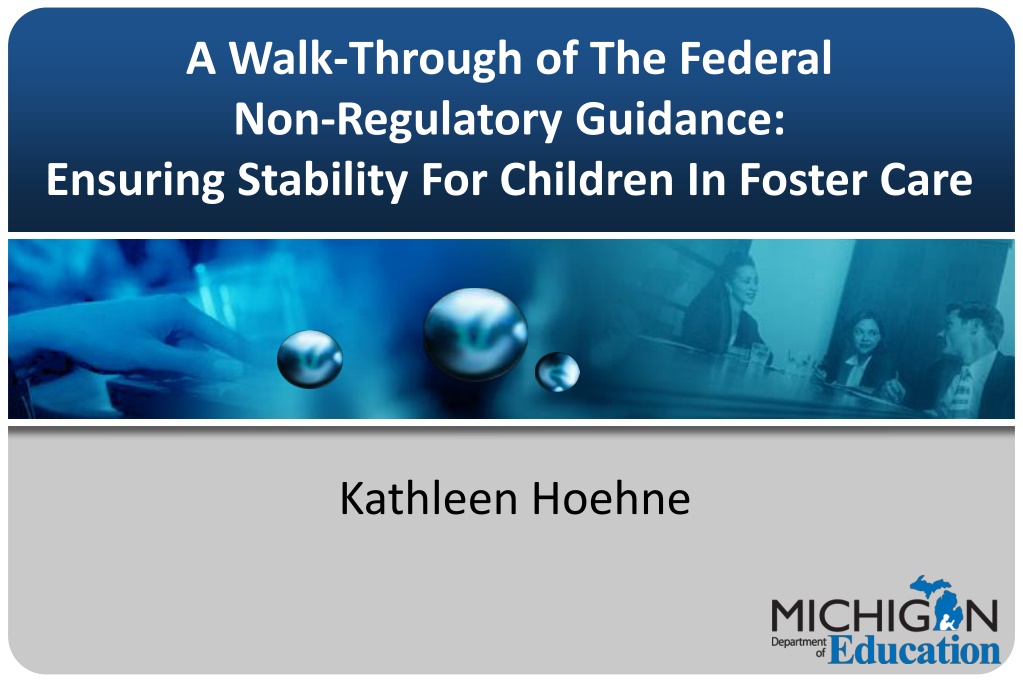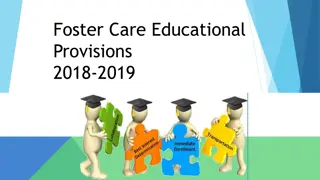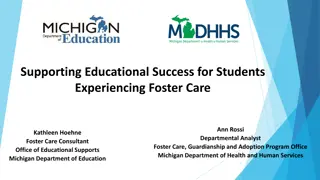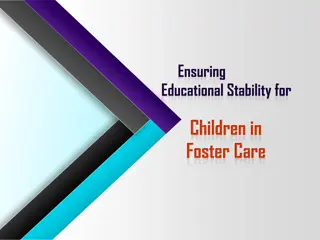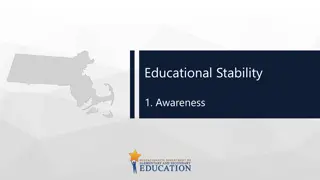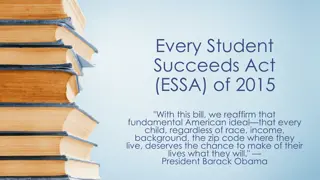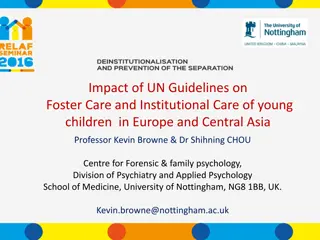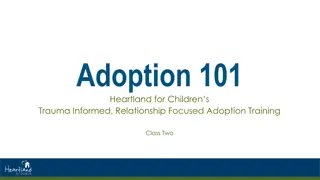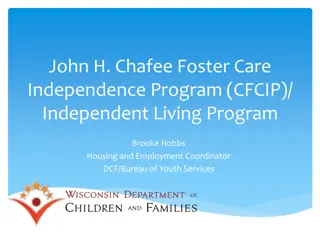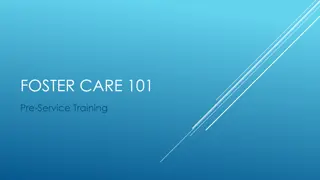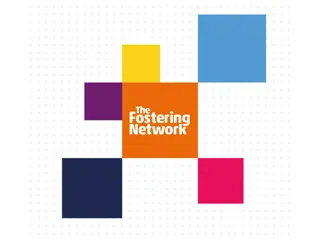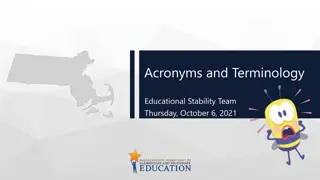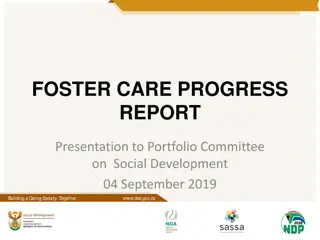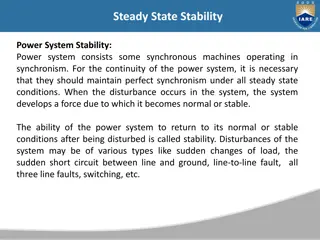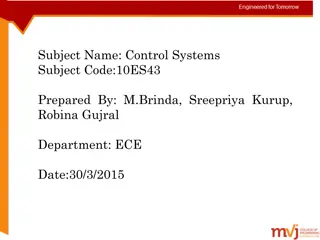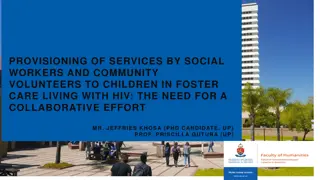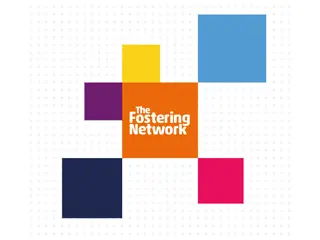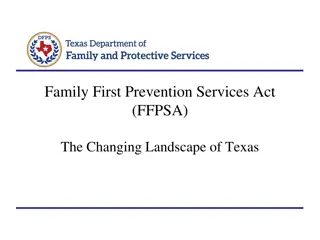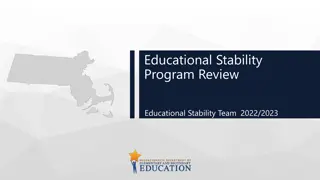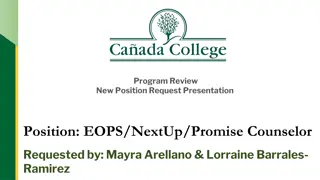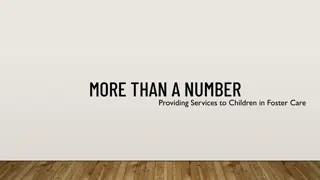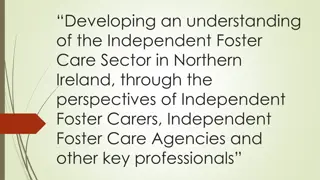Enhancing Educational Stability for Children in Foster Care
This detailed walkthrough of federal non-regulatory guidance focuses on ensuring stability for children in foster care, with a particular emphasis on educational stability under ESEA and ESSA provisions. It covers key aspects such as the school of origin, collaboration between SEAs, LEAs, and child welfare agencies, and the importance of minimizing educational disruptions for children in foster care.
Download Presentation

Please find below an Image/Link to download the presentation.
The content on the website is provided AS IS for your information and personal use only. It may not be sold, licensed, or shared on other websites without obtaining consent from the author. Download presentation by click this link. If you encounter any issues during the download, it is possible that the publisher has removed the file from their server.
E N D
Presentation Transcript
A Walk-Through of The Federal Non-Regulatory Guidance: Ensuring Stability For Children In Foster Care Kathleen Hoehne
SESSION AGENDA Introduction Review Handout Discuss Parking Lot Outline Potential Stakeholder Opportunity 2 10/6/2024
EDUCATIONAL STABILITY New requirements under Title I of the Elementary and Secondary Education Act (ESEA), as amended by the Every Student Succeeds Act (ESSA), highlight the need to provide educational stability for children in foster care. These provisions emphasize collaboration between the SEA, LEAs and Child Welfare agencies. These ESSA provisions specifically emphasize the importance of limiting educational disruptions. *page 6 3 10/6/2024
QUESTION #1 All children in foster care enrolled in schools in the State Education Agency (SEA) Definition of Foster Care 24 hour substitute care for children placed away from their parents or guardians and for whom the child welfare agency has placement and care responsibility. *page 6 4 10/6/2024
QUESTION #4 An LEA must collaborate with State and tribal child welfare agencies to implement the Title I educational stability provisions (ESEA 1111(c)(5)). LEAs should work with these agencies to develop processes and procedures to fit unique local and individual child needs. *page 7 5 10/6/2024
QUESTION #5 CWA s are required to include a plan for ensuring the student s educational stability within their required case plan. The educational stability plan must be written into the student s case record. All decisions are based on Best Interest Determination factors specific to each student. *page 8 6 10/6/2024
SCHOOL OF ORIGIN The school of origin is the school the child was/is enrolled in at the time of placement into foster care. Educational stability premise is established around the school of origin. SEAs and LEAs must ensure that a child in foster care enrolls or remains in his or her school of origin unless otherwise determined through the best interest decision. *page 11 7 10/6/2024
QUESTION #11 SEAs and LEAs must collaborate with State and local CWAs to ensure that each child in foster care remains in school of origin for the duration of the child s time in foster care. This no longer applies if a child exits care, however, continued school stability is recommended for the duration of that school year if appropriate. *page 11 8 10/6/2024
QUESTION #12 Possible factors to consider Best Interest Determination Preferences of child Preferences of child s parents or decision maker Placement of child s siblings Possible length of stay How many moves have already been made *page 12 9 10/6/2024
BEST INTEREST DETERMINATION This is a decision, based on individual student needs/factors, impacts where a student will attend school. ESSA intends this to be a collaborative process Review checklist-handout 10 10/6/2024
QUESTION #14 Possible participants to determine Best Interest: Child if age appropriate Foster parent/caregiver Biological parents when appropriate LEA foster care liaison CWA caseworker Others as appropriate *page 13 11 10/6/2024
QUESTION #15 Title I does not determine a specific timeline for making a Best Interest Determination, however this should be addressed as quickly as possible to ensure continuity for the child. To the extent feasible and appropriate, LEAs must ensure that a child remains in school of origin during the determination process. *page 13 12 10/6/2024
QUESTION #18 School Placement Dispute Resolution Collaboration and coordination between CWAs and LEAs to reach agreement for determining Best Interest is required. HOWEVER: State law permits the CWA the ultimate school placement decision maker. Only Choices are: School of Origin School of Residence *page 14 13 10/6/2024
QUESTIONS #19 & 20 To the extent feasible and appropriate, an LEA must ensure that a child remains in his or her school of origin while the disputes are being resolved to minimize disruptions and reduce the number of moves between schools (ESEA 1111(g)(1)(E)(i)). *page 15 14 10/6/2024
TRANSPORTATION An LEA receiving Title I funds must collaborate with the CWA(s) to ensure that transportation for children in foster care is provided, arranged and funded. (ESEA section 1112(c)(5)(B)). Shared responsibilities are needed to ensure adequate provision of transportation for children in care according to Title I and Foster Connections Act for school stability. *page 15 15 10/6/2024
QUESTION #21 Development and implementation of transportation procedures for children in foster care are the responsibility of LEAs. The SEA should work collaboratively with the CWA to provide uniform statewide guidelines or procedures to LEAs. *page 15 16 10/6/2024
QUESTION #21 CONTINUED SEAs are responsible for establishing a mechanism for LEAs to resolve interagency disputes related to transportation costs. MDE has a NEW Foster Care Transportation Dispute Resolution Policy and Procedure. SEA duties also include monitoring of LEA transportation procedures. *page 16 17 10/6/2024
QUESTION #22 LEAs must collaborate with CWA to develop and implement written procedures governing how transportation to maintain children in foster care in their school of origin if determined to be in their best interest, will be arranged and funded for the duration of the child s time in care. *page 16 18 10/6/2024
QUESTION #22 CONTINUED Children in foster care needing transportation to schools of origin will promptly receive transportation in a cost effective manner and in accordance with Title IV-E (Social Security Act). If there are additional costs transporting to the school of origin, the LEA will provide transportation if (seen next slide) *page 16 19 10/6/2024
QUESTION #22 CONTINUED (2) The CWA agrees to reimburse the LEA The LEA agrees to pay for the cost The LEA and CWA agree to share the costs *page 16 20 10/6/2024
QUESTION #23 CWAs responsible for Title IV-E and IV-B (Social Security Act funds) must ensure that the educational stability plan of each child in foster care includes an assurance that the CWA has coordinated with the LEA(s) to ensure the child can remain in the school of origin if determined to be in his or her best interest *page 16 21 10/6/2024
QUESTION #27 Additional Costs Additional Costs reflect the difference between what an LEA otherwise would spend to transport a student to his or her assigned school and the cost of transporting a child in foster care to his or her school of origin. *page 17-18 22 10/6/2024
QUESTIONS #28 & 32 Dispute Resolution Process SEAs in partnership with CWA and other key decision-makers (Governor, etc.) develop a uniform State process for resolving transportation disputes. LEAs must ensure that a child in foster care remains in his or her school of origin while any disputes regarding transportation costs are being resolved. *page 18 & 19 23 10/6/2024
QUESTIONS #29 & 31 Yes! *pages 18 & 19 24 10/6/2024
RESOURCES https://www2.ed.gov/policy/elsec/leg/essa/ edhhsfostercarenonregulatorguide.pdf Non-Regulatory Guidance: Ensuring Educational Stability for Children in Foster Care 150 printed copies are available at this conference, first come first served 25 10/6/2024
Contact Information Kathleen Hoehne MDE Foster Care Consultant hoehnek@Michigan.gov 517-241-6970 26 10/6/2024
